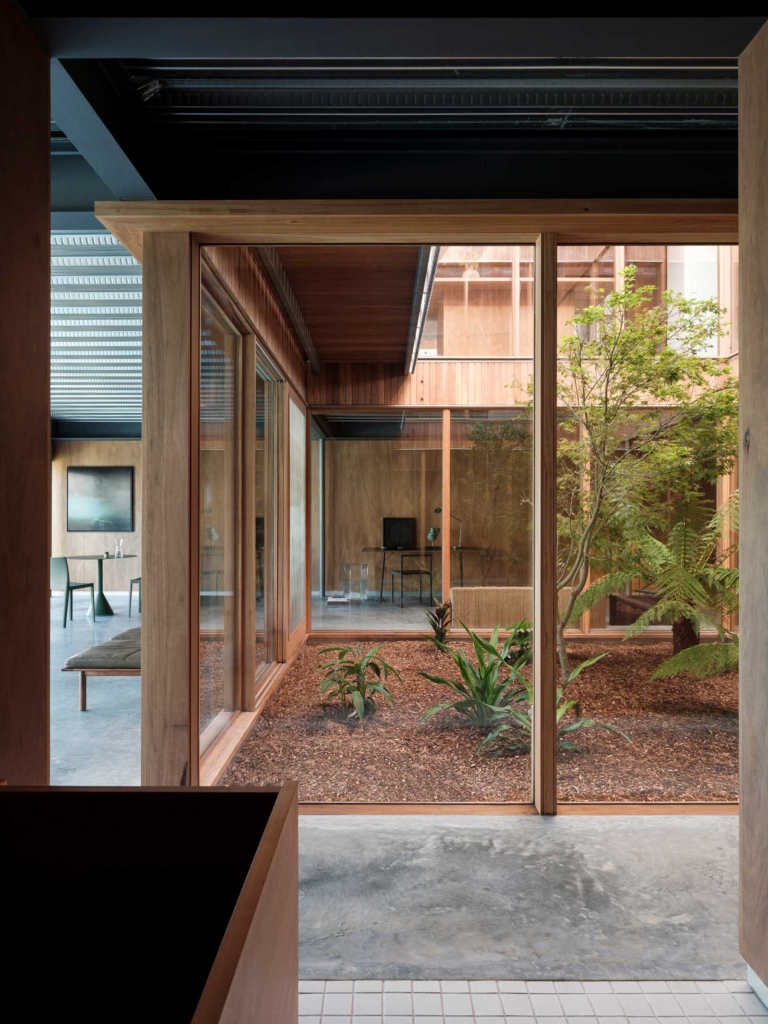
Headland House by Stevens Lawson Architects
Set on the headland above Onetangi Beach on Waiheke Island, the Headland House by Stevens Lawson Architects takes inspiration from traditional Maori pā forms, the geometry of the landscape that slopes and curves down to the water’s edge, and the simple beauty in collections of stones, driftwood and shells that are often found on the beach below.
The project was designed for clients whose lifestyle saw them spending an increasingly greater proportion of the year living on Waiheke, and who sought an informal house that amplified the beachside context without dominating the line of the ridge. In response, Stevens Lawson created a design for a house comprised of a collection of smaller, organic pod-like forms, which enable the structure to sit in harmony with the surrounding landscape.
The architects’ thinking was informed by a loose interpretation of the traditional Maori pā (fortified villages) that were historically found on prominent headlands around the coast. Another point of reference were the natural assemblies of scattered pebbles and driftwood that occur on the beach. These groups of objects tossed together by natural forces of wind and tide create sculptural yet naive forms that in some ways resemble a microcosm of the larger geographic formations that punctuate the coastline.
The project was designed for clients whose lifestyle saw them spending an increasingly greater proportion of the year living on Waiheke.
Externally, the dwelling is clad in timber that has weathered to a silvery hue, recalling the tones of the bush and ocean on an overcast day, while the strong striations within the timber cladding are reminiscent of the rhythmic lines found throughout expanses of rock. Viewed as a whole, the composition of the curved buildings together further emphasises the association between the Headland House and nature.
Moving inside, the resulting plan sees open spaces ‘held’ within surrounding protective shells or pods. A sense of open, boundless space in the living area is contrasted with cave-like spaces of retreat in the bedrooms and lounge. Additional contrast and tension are created between the robust, timber-clad pods and the design’s equal focus on the minimal interstitial spaces, generating a dialogue between intimacy and openness.
The architects’ thinking was informed by a loose interpretation of the traditional Maori pā (fortified villages) that were historically found on prominent headlands around the coast.
The building’s interaction with the site is also experienced from within. The distinct placement of each pod focuses on a particular aspect of the 270-degree views afforded from the headland, ensuring that the architecture mediates and shapes the view to create a considered engagement with the ocean beyond. The design goes further than this, however, by deliberately placing walls and apertures at angles that show not only the view but also expose the built form. In this way, the project reinforces the sense that the building is in some way a phenomenon arising within the landscape, like an upthrust of rock on the headland, or a scattered collection of ocean rocks on the sand.
Set low to hug its enviable place on the coastline, the Headland House rests as an architectural response to both landscape and the building tradition of the land’s Maori inhabitants. The silvered, organic forms already appear to have been worn smooth by the elements, seeming as almost though they are simply a natural progression of what has gone before.



























